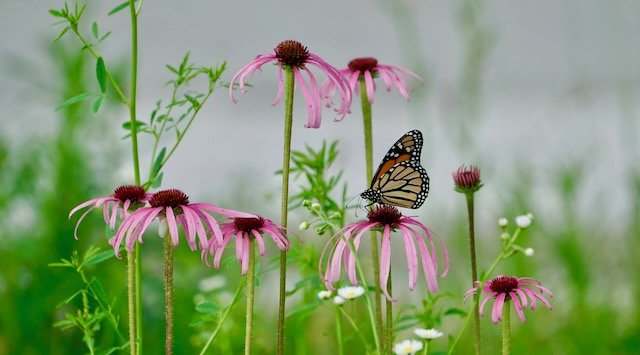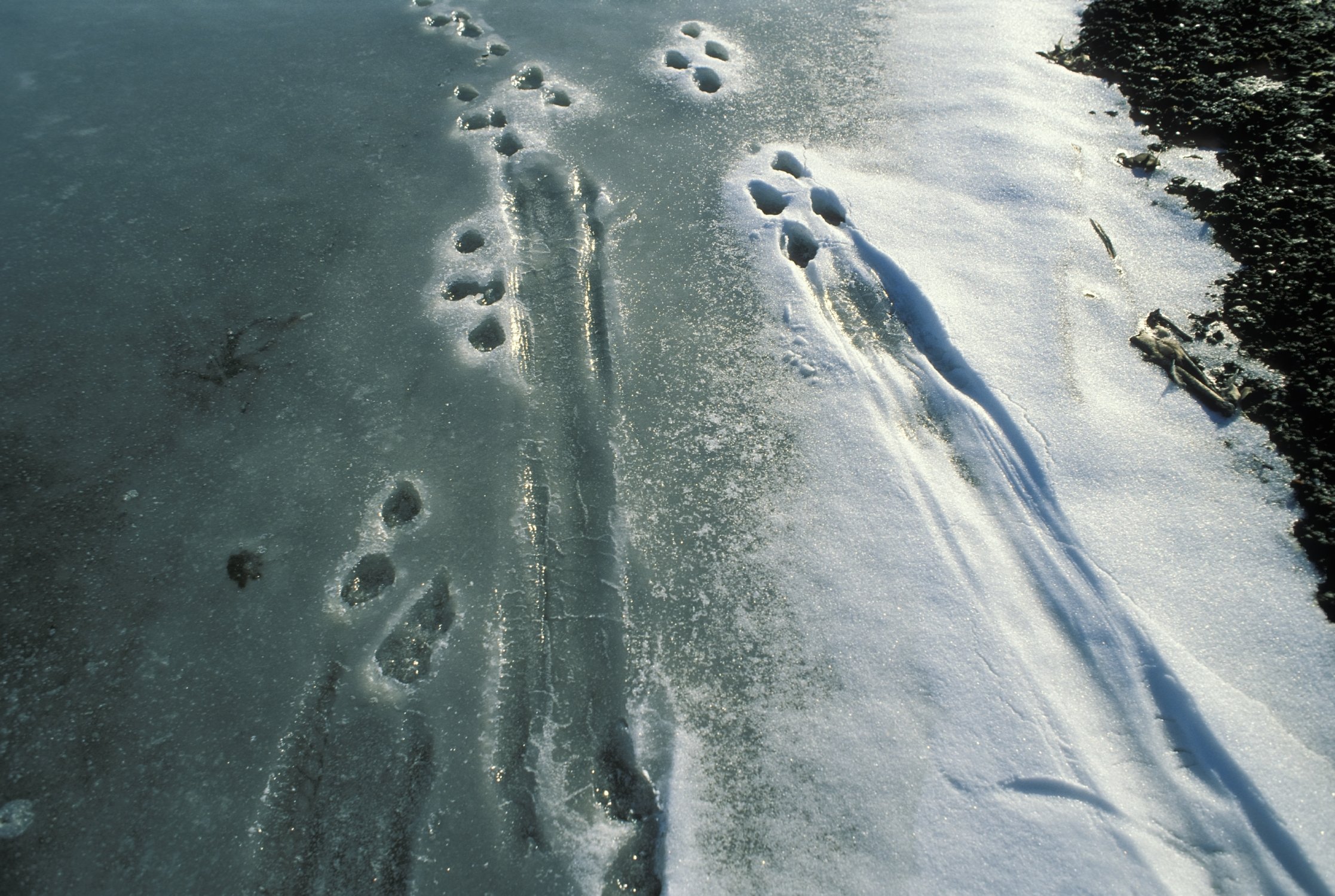Congratulations to our graduates of the Chert Glades Missouri Master Naturalist Class of 2022!
Prairie Days
George Washington Carver National Monument is the place to be for Prairie Days, Saturday September 10th. Take a step back in time with games and toys that your grandparents could have played. Find out how the kids can become a Junior Ranger. Make some candles, churn some butter, and lye soap. Enjoy the variety of music under the tent, smell the smoke from the fire pit that has Dutch ovens cooking over it. The visitor center will show a film of George Washington Carver’s life and accomplishments.
Take a hike through the prairie and visit the Cemetery. Visit and learn from the many exhibits in the front lawn of the park.
Come on out and enjoy the day! Event runs 10 AM - 3PM
Ride the journey with Sara Dykman
Ride the journey with Sara Dykman as she presents “Bicycling with Butterflies” at Joplin Public Library on September 24th at 6:30 p.m. To learn more follow this link.
Got bird food?
It takes about 6,000 caterpillars to raise one clutch of young birds!
Summer Rains, bring Summer Mosquitos
To reduce the breeding mosquito population around your home and property, routinely check and dump all standing water and debris.
CHANGE IS THE NORM FOR BOTH COLOR AND SOUNDTRACKS
Field notes by Jeff Cantrell, photos courtesy of the MO Dept. Conservation
The month of April simply explodes with opportunities for nature viewing. The forest floor in a high-quality natural area will display a different setting of wildflowers every four or five days. The flora color palette will be heavy on the pinks, blues, and whites catering to specialized spring pollinators attracted to those colors and, sometimes, different fragrances. Only a few yellow and red native flowers this early season. The yellow flowers will likely dominate in the open country this summer and supply social insects and their kin with nectar in exchange for pollination services. These are mostly moisture loving flowers and they bloom while the forest canopy is tender with only tree buds and the youngest of leaves. Sunlight during this spring season streams in and warms the soil for these ephemeral bloomers and the shallow pools of waters. The pools benefit from the sunlight by staging a multitude of food webs in the water. The sunlit layer just below the surface has food chain “links” such phytoplankton and zooplankton increasing as fast as the flora color changes are happening just feet away on drier land.
I find these temporary pools fascinating because they are an ecosystem within an ecosystem, and they are very important to the ecological balance. Beyond the visual of the beautiful forest floor and the colorful migratory birds coming to the surface waters to drink, there are other attractions to these pools. This watery landscape has a spring soundtrack. Many frog and toad species are attracted to these temporary pools. The big puddles may dry up soon, but there is time for amphibian life cycles to progress and capitalize on the aquatic food webs already in place. Several species of amphibians (salamanders, toads & frogs) depend on these habitat features, and landowners may be interested in adding more for conservation purposes.
The soundtrack is commenced by the male frogs and toads calling for the arrival and mate attraction of the females. Some males rest their vocals and try to position themselves between a healthy calling male and an approaching female.
These males are referred to as “satellite” males by biologists, energy is important, and this is one way of not expending more.
The opening acts on this Ozark Forest soundtrack will most likely be spring peepers, western chorus frogs, gray tree frogs, American toads, and pickerel frogs. Southern leopard frogs have a “laughing” or chuckle sound to their calls and will be found at ephemeral pools at the forest edge and more open grassy areas.
Spring peepers are certainly a harbinger of spring, and their call is often one of the first sounds of spring nature lovers recognize. Naturalists listen for the peepers initially and know a few of the other species will follow in the weeks ahead. Frog calls revolve during the weeks of April and May similar to the progression of flowers with their timeframes to bloom and go to seed. Eventually the canopy of the forest fills in and the spring flora ceases under heavy shade. The young tadpoles quickly grow and transform to young adults before the water dries. Naturalists will now cast their observations to the open areas for more flowers of yellow, and listen for cricket frogs, green and bullfrogs on sunnier aquatic habitats.
Enjoy the music! The singers may be cold-blooded, but their vocals will make you smile! - Jeff
Jeff is a local Conservation Educator stationed at Shoal Creek Conservation Education Center, Joplin, MO Jeff.cantrell@mdc.mo.gov
Spring Peeper
Leopard Frog
Gray Tree Frog
Pickerel Frog
American Toad
sounds from Lang Elliott Music of Nature
Romps and Convocations are Going Strong in Missouri's Wilds
Field notes by J. Cantrell, photos courtesy of the MO Dept. of Conservation
Years ago, I was working an Eagle Day event at Schell Osage Conservation Area (near El Dorado Springs). These were extremely popular events with the public and school groups coming to view Omega or Phoenix, who were rehabbed eagles from the Dickerson Park Zoo, and to see wild eagles in their natural habitat. I staffed spotting scopes along the wetland and set up an area to let people view eagles perching in the treetops or on the lake’s icy surface. Unfortunately, eagles were firmly on the endangered species list then, and out of protected areas, in ideal habitat, they were rather rare for Missourians to see. Visitors eagerly lined up at the optics and I could tell by their facial expressions when they had a full view of our national symbol. They were thrilled at the view and slowly would step back and use their own binoculars to scan for other eagles on their own. The spotting scope outreach conservation event piqued interest and now they were open to learn a little about the habitat and the role the eagle plays in the environment. The observations of a kettling group of eagles riding the thermals in the midday sunshine are called a “soar” of eagles, and perhaps bringing the most interesting eagle behaviors is when they are grouped together on the ground either resting or feeding. A gathering of bald eagles like this is called a “convocation,” and it is thrilling. Educational steps in a simple form of exposure like this was one of the keys to bringing the bald eagle back from critically low numbers. Exposure may lead to a little understanding and, in turn, more understanding.
River Otters & their tracks
That same day at Schell Osage many of my audience members got to witness another comeback performance…river otters. We were fortunate enough to have a mother otter and four teenager otter pups come through the waterways behind the groups of people waiting for their turn at the scopes. On snow-covered land or frozen over lakes, otters travel by alternating running and sliding. Otters swimming together have an uncanny resemblance to sea life mammals; they surface often at unpredictable places. They may bob up or even come ashore briefly to get a better look at their surroundings and “touch base” with otter siblings. They are amusing to watch, thus a group or family of otters on the move are called a “romp” due to their playful nature. Rarely do we catch them resting together, but if so – their grouping is referred to as a “raft.” Historically, otter numbers were decimated by unmanaged harvesting, habitat destruction, and water pollution. That day years ago was when I witnessed people’s excitement and celebration of otter success as well. Since then, over the last 25-30 years river otters have steadily, slowly increased and filled their habitat niches. The otter is an extraordinary animal to learn about and discover in the wild. Over the past year, I’ve had nine different accounts of people visiting with me and sharing photos and videos of otters. Surprisingly their stories were very similar to the Schell Osage account …a group of otters traveling, playing, and even sliding together. Otters are one of the most intelligent mammals in North America and a naturalist observing them will quickly pick up on their body language and verbal communication skills. Predators are vital to a healthy ecosystem and the river otter is an efficient predator of freshwater clams, crawdads, and certain stream fish.
February is a wonderful time to easily view bald eagles in the wild and to happen upon otter signs along the rivers and wetlands. I hope to catch you out in the wilds this month and enjoy the conservation successes of these comeback species! - Jeff











